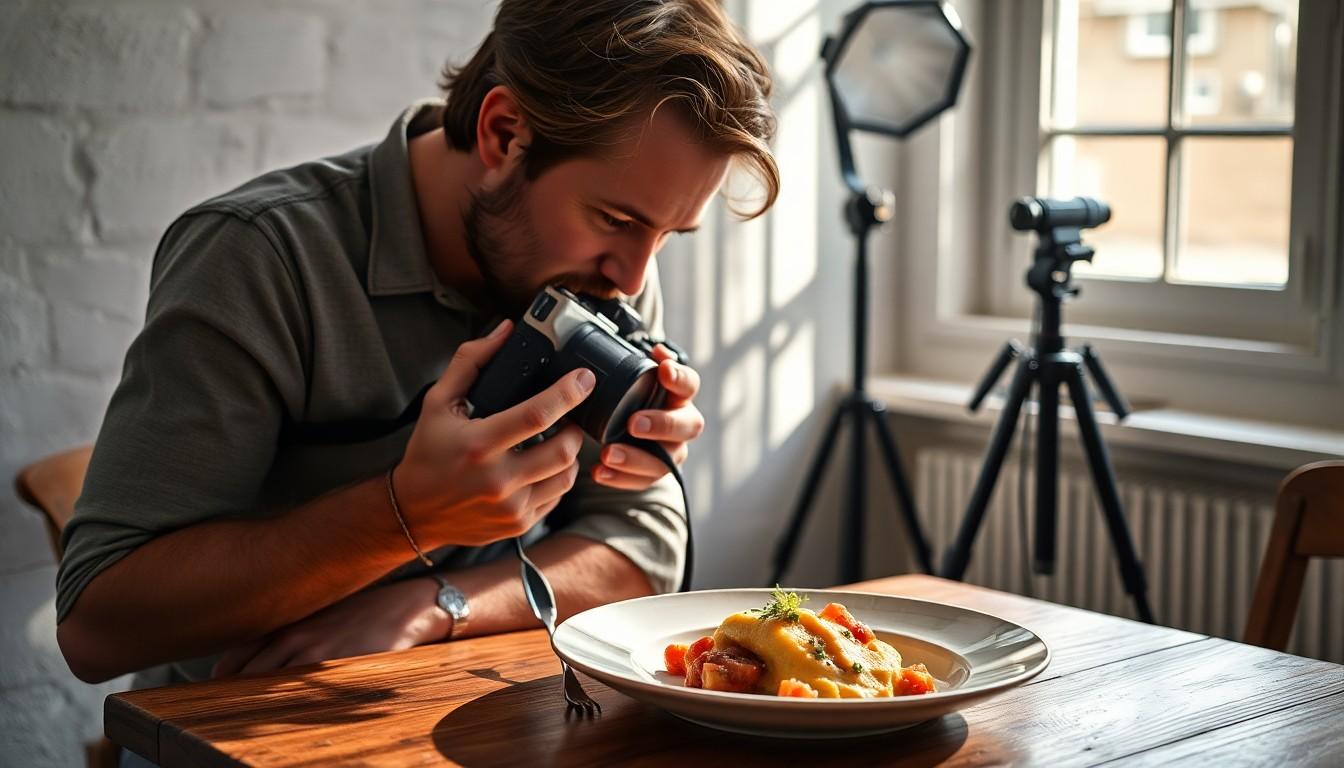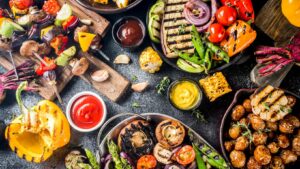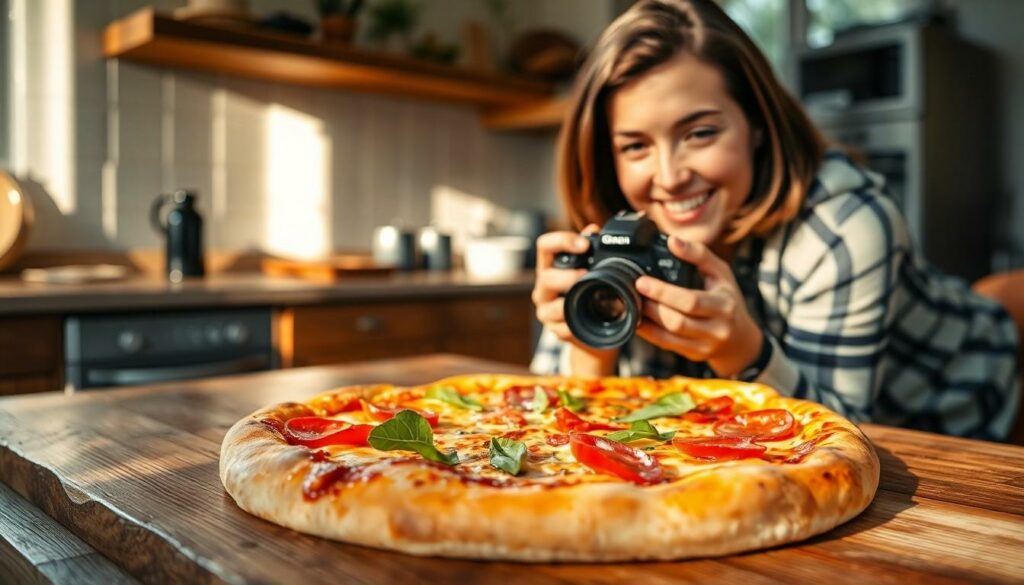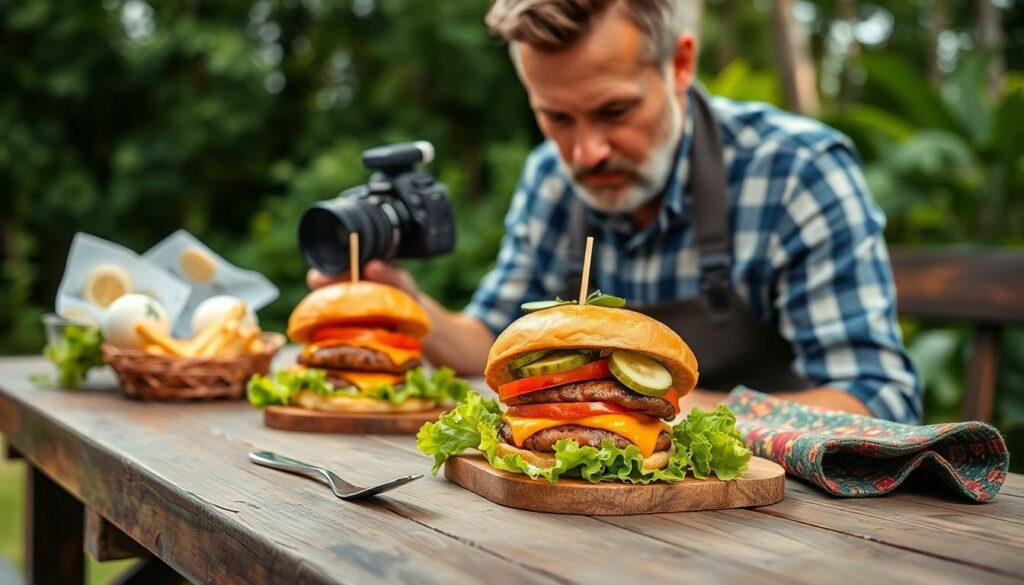In a world where everyone’s a self-proclaimed foodie, lifestyle food photography is the secret sauce that turns ordinary meals into mouthwatering masterpieces. Imagine capturing the perfect slice of avocado toast, its vibrant green hue popping against a rustic wooden table. It’s not just about the food; it’s about telling a story that makes viewers feel like they can almost taste it.
With the right techniques, anyone can elevate their culinary creations from drab to fab. Whether it’s for Instagram or a personal blog, mastering lifestyle food photography can make even last night’s leftovers look like a gourmet feast. So grab your camera and get ready to turn your kitchen into a mini photo studio. After all, if your food doesn’t look good on camera, did you even eat it?
Lifestyle Food Photography
Lifestyle food photography focuses on presenting food in a relatable and appealing context. This style goes beyond merely showcasing dishes; it captures the experience of enjoying a meal. By incorporating natural elements like ambient light, vibrant settings, and engaging props, this photography style elevates food to an art form.
Storytelling plays a crucial role in this genre. Photographs tell stories about the culture, the people, and the moments around food. Engaging compositions often include elements like hands interacting with food, social settings, or prepared dishes surrounded by ingredients. This storytelling approach invites viewers to feel a connection to the food.
Techniques such as using wide apertures create shallow depth, emphasizing the main subject while softly blurring the background. Natural light enhances colors and textures, providing a warm, inviting ambiance. Experimenting with angles—shooting from above, eye level, or at creative perspectives—adds diversity to the imagery.
Props can add a layer of interest to food photography. Textured fabrics, rustic tableware, and fresh ingredients complement the main dish without overshadowing it. A cohesive color scheme unifies the elements, facilitating a pleasing aesthetic.
Editing is a vital part of lifestyle food photography. Adjusting brightness, contrast, and saturation can bring the image to life, while maintaining a natural look. Many photographers prefer subtle enhancements over drastic modifications, preserving the authenticity of the food.
Platforms like Instagram and Pinterest provide excellent opportunities for sharing lifestyle food photography. Engaging visuals attract attention, leading to increased interaction and follower growth. In this digital age, stunning food photography offers a compelling way for food enthusiasts to showcase their culinary creativity.
Essential Equipment for Lifestyle Food Photography
Proper equipment enhances the quality of lifestyle food photography, ensuring stunning visuals that tell a story. Prioritizing the right tools makes a significant difference in the final image.
Camera and Lenses
Choosing a camera is crucial for capturing rich details. DSLRs and mirrorless models offer versatility and high image quality. Selecting a lens with a wide aperture, such as 50mm or 85mm, allows for beautiful depth of field. Macro lenses capture intricate details in small dishes, providing depth and interest to the composition. Utilizing a tripod stabilizes shots and allows for longer exposure times in low light conditions.
Lighting Tools
Lighting plays a vital role in food photography. Natural light, particularly during golden hour, creates an inviting ambiance. Utilizing diffusers softens harsh sunlight and reduces shadows for a balanced image. Reflectors direct light effectively, adding highlights to food. For indoor shoots, softbox lights mimic natural light, ensuring consistent exposure. With the right lighting tools, photographers can dramatically enhance the appeal of their culinary captures.
Techniques for Capturing Stunning Images
Capturing stunning lifestyle food photographs requires a blend of technique and creativity. Applying the right methods enhances the overall aesthetic appeal of images.
Composition Tips
Positioning elements thoughtfully within the frame creates a more engaging image. Use the rule of thirds to guide placement and draw viewers’ eyes to the subject. Incorporate leading lines that naturally direct attention. Focus on balance by including negative space that allows the main subject to breathe. Vary angles to find unique perspectives, such as shooting from above or at eye level, which offers distinct looks. Lastly, ensure that backgrounds complement the food without distracting from it, maintaining clarity and coherence in each shot.
Styling Food Effectively
Styling plays a crucial role in transforming ordinary dishes into visual delights. Choose fresh ingredients that look appealing and vibrant for foreground interest. Layer textures by incorporating contrasting elements, such as smooth sauces with crunchy toppings. Select props that enhance the story, like rustic tableware or colorful linens, to create a cohesive look. Consider the color palette, as harmonious colors evoke mood and entice the audience. Finally, use garnishes that elevate the dish visually, highlighting its freshness and inviting viewers to indulge.
Post-Processing in Lifestyle Food Photography
Post-processing enhances the visual storytelling of lifestyle food photography, elevating images from simple captures to captivating narratives. Effective editing techniques transform colors and textures, ensuring the final output is striking and engaging.
Editing Software Options
Several editing software options cater to lifestyle food photography needs. Adobe Lightroom stands out for its user-friendly interface and powerful editing capabilities. Capture One offers advanced color grading features, ideal for professionals. For budget-conscious users, Snapseed provides robust mobile editing tools. Additionally, VSCO combines editing and photo-sharing capabilities, appealing to social media enthusiasts.
Basic Editing Techniques
Basic editing techniques can significantly improve food imagery. Adjusting brightness and contrast brings out details, making dishes more appealing. Cropping images refines composition, often aligning them with the rule of thirds. Applying filters can enhance the overall mood while maintaining the food’s natural colors. Clarity adjustments increase texture, adding depth to the image. Overall, these techniques create polished visuals that attract viewers.
Building Your Portfolio
Creating a strong portfolio showcases skills and attracts potential clients. Start by capturing a variety of food styles, focusing on diverse cuisines and dishes. Include images that highlight everyday meals, as well as elaborate presentations for special occasions.
Selecting a cohesive theme boosts visual appeal. Consider using consistent editing styles or color palettes to tie images together. For instance, soft pastel colors evoke a sense of calm, while vibrant hues can create excitement.
Incorporating lifestyle elements adds depth to photography. Capture moments of preparation, serving, or enjoying meals, as these shots offer context and engage viewers. Use props like utensils, tableware, and ingredients to enrich compositions.
Utilizing social media platforms enhances portfolio visibility. Share high-quality images on Instagram and Pinterest to connect with a broader audience. Engaging with followers through regular posts and behind-the-scenes content fosters community and showcases creativity.
Networking with other photographers also builds exposure. Collaborating helps to exchange tips and ideas that refine techniques and broaden styles. Joining photography groups or attending workshops creates opportunities to learn and share experiences.
Taking feedback into account refines the portfolio. Encourage critiques from peers or social media followers to identify strengths and areas for improvement. Adapting based on constructive feedback leads to more potent storytelling through visual imagery.
Regularly updating the portfolio reflects growth and evolving skills. As styles change and new techniques emerge, fresh content ensures the portfolio remains relevant and engaging. Consider documenting personal projects or challenges to emphasize versatility and creativity in lifestyle food photography.
Rewarding and Fulfilling
Lifestyle food photography is more than just capturing images; it’s about telling a story that resonates with viewers. By mastering techniques and utilizing the right equipment, anyone can elevate their food photography to new heights. The combination of creativity and skill transforms everyday meals into enticing visual narratives.
As food enthusiasts embrace this art form, they not only enhance their culinary presentations but also connect with a broader audience. Sharing these captivating images on platforms like Instagram and Pinterest opens doors to new opportunities and collaborations. With dedication and practice, the journey into lifestyle food photography can be both rewarding and fulfilling, inviting others to savor each moment through the lens.


